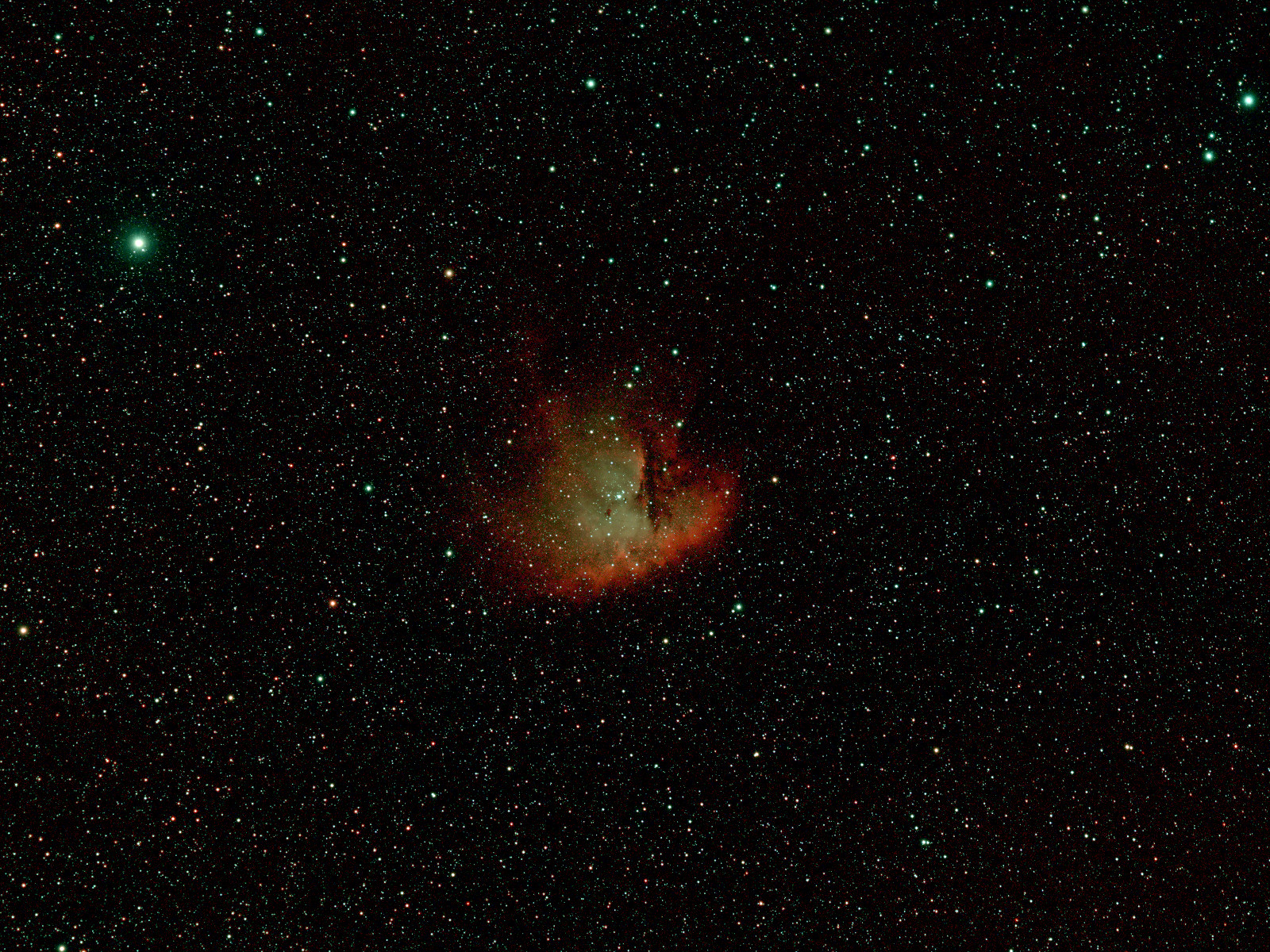
“My precious…”
A number of pictures taken over the past few days of rare clear sky.









My plan was simple — over a period of number of days, take a picture of the sky where my telescope thought Neptune would be, stack the images, and find a line of dots against the fixed stars. Didn’t work.
There are 4 sub-images (“subs”, in the lingo), taken on 09/15, 09/21, 10/03, and 10/10. 25 days.
Here’s the partially processed stack, straight from the computer. Note that you select one of the subs as a reference, then try to fit the others on top. This is a full frame, 3.5×2.5 degrees in the sky:
I find this image aesthetically pleasing, though it is disconcerting that the 4 subs were so far from alignment. Somehow I thought the tracking software in my rig would do a better job. But in any case… Neptune takes 165 years to make a trip around the sun — 360 degrees in 165 years, or about 2.2 degrees a year. That’s about .006 degrees a day, or around 20″/day, on average, or an arcminute every 3 days. So, maybe 6-7 minutes over 25 days? A little less than half a cm on my screen, that would be.
But, averages.
Because of Earth’s motion around the sun, Neptune stops, then goes retrograde for a while, every year, and I don’t know where we are in this cycle. So maybe it didn’t move at all. I could probably get Stellarium to show me, but for the time being I’ll chalk it up as a failed experiment that gave me a pretty picture.
I believe the elephant’s trunk is dangling down from the upper middle. This is a composite of 100 2-minute exposures; processed with Pixinsight and Gimp. Better pictures taken by more experienced amateurs with better equipment can be seen here. The full field of view here is actually known as IC 1396, and it’s part of a much larger complex. Here’s a great view of the whole complex.
There is a bright star dead center. You can’t tell in this image, but that is a group of at least three stars. Here’s the center at full resolution:
This is the combined image; once you know what you are looking for the center star does look a bit suspicious.
Here’s the center without the nebulosity, from a single 2-minute exposure:
One star is clearly separated, and there is a hint of another in the lower right. Other exposures show that split more clearly. This is at the limit of the resolution of my telescope.
IC 1848, if I remember correctly from last night when I was collecting this. The Heart Nebula is just a little down and to the right. Merging with the previous image, we get something like this:
More careful processing is needed to get a seamless transition between the images, but you get the idea…
The last two nights were clear and mostly moonless. I have images of several other objects that may be OK.
IC 1805, known as the “Heart Nebula“. Also catalogued as “Sharpless 2-190”. Just above, out of view, is another nebula , IC 1848, known as the “Soul Nebula”. I’ll try that one soon. Perhaps I’ll try to construct a mosaic.
This is M33, the “Triangulum Galaxy”.
Very very roughly, given all the uncertainties about the size of your screen and how close you are, this view is about not too far from naked eye size.
Here’s an image of the moon with the same equipment, same magnification:
About the view you would get through binoculars.
The moon is half a degree wide; M33 is a little over one degree, but that includes dim reaches that don’t show in the photograph above.
I posted a picture of the Andromeda galaxy a few days ago at the same scale. It is much larger, about three degrees wide. (Most of the astrographs I post are with the same tiny 61mm telescope and camera, so the scale for all of them is similar. )
The sky goes on forever, and it is littered with amazing giant things, only slightly hidden from us.
I tried a fairly major software change on my imaging setup, but it was a failure. — I couldn’t make it work. Even worse, the tracking software several times ran the telescope into the tripod and ground the gears in the mount in a very frightening way. So I went back to the previous setup. Fortunately, the Andromeda Galaxy is now visible, and I was able to get a nice image, to prove that things were still working. Everyone has seen this a million times, but it never gets old:
Edit: here’s an improved version of the above image — more exposures, better processing. Barely noticeable at mobile device scale, but full size you can see the difference…